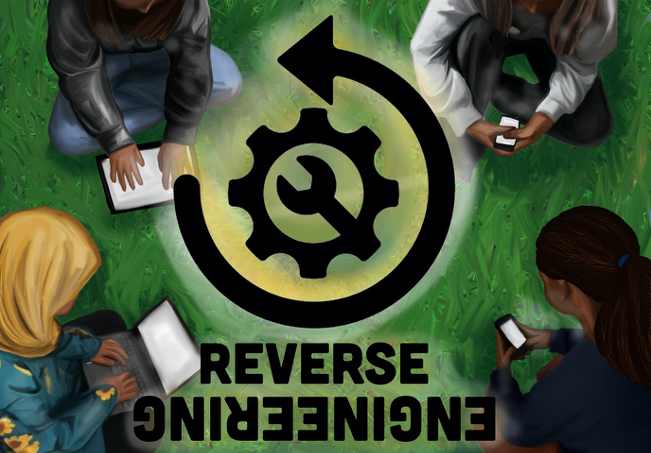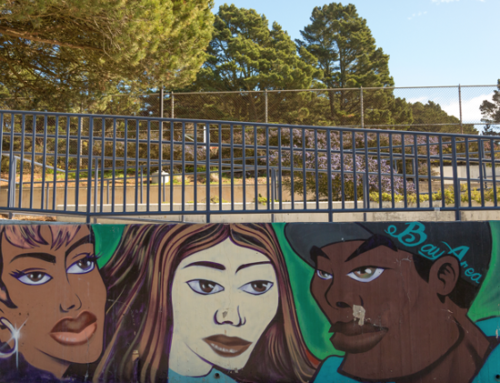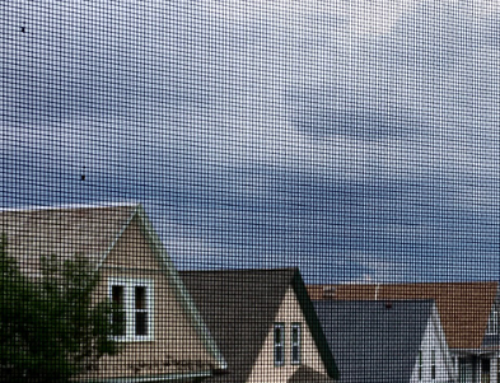It begins, as it always does, with a lie. By tracking the virus that caused global havoc at the time, its spread could maybe be slowed down. The Tracing App – TA – was announced at that helpless and panicked moment. But for people in particular areas, without access to test kits and prevented from Intensive Care, soon enough the TA approach defeated its own purpose.
The TA was never meant to help flatten the curve for them. The working classes and racially mixed communities were among those designated to be sacrificed in preventing the virus from getting to others, to the more deserving. De Pijp, an old part of Amsterdam, was demarcated as a space to contain this so-called “herd.” Imagine: Your role is to make sure others get immune, by getting ill or dying yourself. It was the pivotal insult to an immense injury.
Meanwhile, critical reports had already revealed the drama unfolding. Some scientists urged society to prepare for a possible pandemic. Some even warned that certain viruses would mutate with new microbial threats. This was ignored by politicians, many of who were on the payroll or in kinship with the military-pharmaceutical-IT corporations. As the pandemic spread, these companies were invited to special “public input” government consultations, almost salivating to sell lab and tracing tools. They were shameless; it was a gory glory. It was too much.
This was an eerie time, and in retrospect it was the point where the scale tipped. Some people thought the pandemic was mektaab, destiny. Many believed it was a sign of God. Some thought it was the Apocalypse. Depending on where your religious outings took you on Friday, Saturday, or Sunday, it was Yawm al Qiyama, Judgement Day, or Yom Kippur…
They all shared an intense hogra, a humiliating kind of hurt. But there was an additional force, a shared intuition that something was going to happen, shaped by that hogra. And a kind of courage stemmed from the sense of being expendable, of having nothing to lose. This is the backdrop to how a few years ago, a moment of incredible serendipity was born during the worst ever pandemic in living memory.

Credit: Georgie Hodges
It was a cloudy Friday afternoon, the air was charged, a collective pain and fury fused into an electric current. Due to the lockdown, people were prohibited from visiting their deceased in the care homes or hospitals. Today bodies of their loved ones were laid bare in cheap caskets by the tram tracks of the old depot-cum-mortuary. They were only allowed to see them from a distance, fenced off by a plastic shield. Some tried to get closer to get a last look, to say their goodbyes, to pray a Fatiha, or cite a hymn, yearning for some sort of ceremony to help them cope with the incredible loss.
A collective breath of disbelief formed an explosive rage among the thousands of people who had gathered from nearby vicinities of De Pijp. First, one united, collected breath was inhaled. Then the accumulation of this colossal, raw sorrow was exhaled in a mutual breath. It was a profoundly sad and heartfelt appeal to someone or something, a powerful act of … invocation. At that very moment, through this synchronised energy, a “thing” was released and pierced the sky. Somehow this moment became an invisible catalyst and exploded silently. Different worlds converged as this “thing” was sucked in by some magical pulse and delivered elsewhere. It may have lasted only a few moments but it was something that defied normalcy.
Their collective, pain-filled plea was delivered and then received in another universe. In all honesty, those recipients regarded planet earth as the most uninspiring – not to mention stupidly self-destructive – among all the worlds across the galaxies. But this really was another level of…unfair? They felt merciful and decided to intervene. From across the galaxy, they blew some of their power onto a bunch of youth.
At that very same moment a group of friends convened at their favourite square after escaping the police. They were also at the tram remise (depot), tearing the plastic shields and trying to break through the fences, managing to march towards the caskets of their families and friends. They were defying both the safety measures and the ban on protests.
Assisted by the TA and covered by “Health Containment Measures,” the state cracked down—hard—on any dissent. Everyone knew that the whole narrative around the TA was a bunch of bogus bullshit, engineered to perfect surveillance techniques. It fed the police with visuals from the CCTV cameras and drones that already decorated the buildings and skyline of De Pijp.
Before they reached the caskets, they were chased by police truncheons. They had just sat down, still breathless from the chase, frantically checking for updates on their mobile phones, when they too felt the “thing” that was thrust out in reply as a magnificent burst of Baraka. It passed through them as a short yet furious glint. The indescribably chaotic moment was gone in the space of three deep breaths, as their pounding hearts evened out, and returned to a steady beat. It was as if a whole catalogue of secret knowledge had leaped off from somewhere straight into their heads. First, there was a heavy silence.
W. t. a. f. … ?
Was it malaika, seraphim, spirits? A sigh had passed from that distant universe all the way to De Pijp. It was received as a vibration, a catharthic nafs.
Rachid, narrow-eyed, almost hissed “Kardash, what is this?” to Tayfun sitting next to him. Shirley, sucked her lips in a fine Caribbean tsjoerie. Fatima, clucked her tongue Amazigh style, t’jack, in confirmation, and boxed her. Tayfun stared Rachid wide-in-the-eyes, only able to say “Sahbi…wayaw” then, turning, looking at all of them with a demurred smile: “Yo, did you all sense that too?’”
One after the other they began to see the messages a greenish typeface bleeping on their phones. For some reason, they all knew that it had to do with the TA and the core message was “reversal.” It took some time to grasp it; they had to reverse engineer the TA in order to repurpose it. The repressive device became a resistance tool.
They began by literally renaming it Divoc-91. Those who only heard it phonetically deciphered it as difuc-91, so it quickly slipped into street vernacular as dafuck. So befitting of the collective state of mind.
At first, everybody was sceptical. For generations, the poor and people of color were disposed to be cynical about any change in hegemonic design. Plenty of anthropologists who flocked to De Pijp in the past years wrote about the “criminal youth” or other tedious culturalist frameworks. So why in the world would they deserve magic? As it turns out, even a sliver of hope can beat a ton of despair. Such magical powers can only be explained as a cosmic jolt. After weeks of trial and error, they managed to master it. The challenge wasn’t technical; as digital natives they were attuned to that.
Like a clap of thunder, the discovery of their own agency inflamed their minds. It allowed them to rethink it all. The raw fury that previously weighed them down was released and replaced by ethereal dedication. They plunged into the tasks at hand.
Divoc gave them three things (and they are still discovering what else it can do), each converging interdependently, in an offline-online dialectic, with the other: Corporeal invisibility. Digital concealment. Technological reversal.
With this mother of all deceptions, they were able to enter government buildings, access the Intelligence service computers, and jest the data servers. They altered the money flows, repurposed expenditure sheets, altered corporate tax laws, syphoned money from finance capital to social budgets, and increased tax income leverage for public projects. They infiltrated police files exposing the corruption and misuse of power. They infiltrated operating systems and invisibly joined secret meetings between ministries to record their grimy sleaze, then transferred those to the independent press. They committed much more delicious joy.
Crises can underpin new radical movements. In the process, the youths transformed from “gangs” to comrades. From loitering nobodies – ‘hangjongeren’ as they were denigrated in the media – to secret cells.
The TA was supposed to be an “exit strategy” for overcoming the pandemic and reopening the capitalist markets. The youth turned it into an “entry strategy” for overthrowing those very markets.
A process of undoing was crucial for the resistance to survive. The best decision the group made in its primary stage: to recruit and train new cohorts on a regular basis and to invest in them with love, joy, and knowledge. “Muscles and tech without brains — muscles and tech with brains,” Fatima had motioned with her left and then right hand the different options. Their future success would hang in the air if they didn’t include an ethical baseline of the rebellion in the core of its very scheme. They needed to create social contexts for their interpretations, and moral frameworks for their choices. That meant a lot of the self-defeating crap and also sexist, ableist, ethnic sectarian nonsense had to be unlearned.
Part of the undoing were the educational workshops, which included creative writing. A young Surinamese-Dutch woman read her project in one of the underground classes. It was titled An-Ta-Go-Ni-Sm.
There is no mektaab without will
No faith without despair
No kindness without wretchedness
No pyramids without pits full of bones
No discovery without theft
No profit without exploitation
No death without life
No prose without spit
The rebellion stayed with them forever. It was like drunkenness—minus the alcohol, minus the vomit, minus the hangover. Will their newly found magical powers disappear, like a curl of smoke, and be slurped back in a jinn bottle like those stupid Ala al-dine cartoons?
But their unity and collective efforts exerted a solidarity more contagious than the virus ever was. Perhaps the deeper magic they were gifted with was the side-effect, created by the brevity of it. The insurrection was gone as quick as it came. However dazzling, it forced them to discover their own agency. Indeed, the fact that it was not only a magical, external force, precipitated a far more permanent rebellion. The alteration of their human and experiential gravity was the real transgression. They learned their history as they remade it, not under self-selected circumstances. Just as they revolutionized themselves, they created something that did not exist before. Pecisely at that moment of crisis, they conjured up distant spirits to their service.
Acknowledgments: I wish to thank Sadika Arab and Heidi Dorudi for their valuable comments and the comrades of The Institute for Technology in the Public Interest.
Cite as: Aouragh, Miriyam. 2020. “A Reverse-Engineered Insurrection.” In “Post-Covid Fantasies,” Catherine Besteman, Heath Cabot, and Barak Kalir, editors, American Ethnologist website, 25 August 2020, [https://americanethnologist.org/features/pandemic-diaries/post-covid-fantasies/a-reverse-engineered-insurrection]
Miriyam Aouragh is a Dutch-Moroccan media anthropologist from Amsterdam. She is Reader at the University of Westminster (London).




